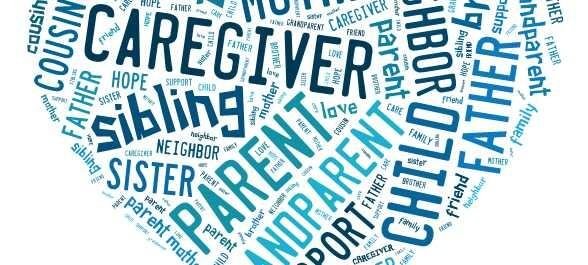Caregiver

Mother Teresa, one of the most notable caregivers of all time, is credited with saying;
“It’s not how much we give but how much love we put into giving.”
If I am able to give from love, then I can serve as a caregiver. Even if I am not caring for the needs of others by protecting their health and well-being, I act as a caregiver when I treat all living beings gently and kindly.
I take advantage of the opportunities to embody the role of a caregiver that exist throughout my day. Whether I perform small acts of kindness such as holding the door open for someone or volunteer my time to help animals in need, I am actively caring for others. I infuse unconditional love into my interactions as I care for others.
Let each of you look not to your own interests, but to the interests of others.—Philippians 2:4

Far from being a righteous woman, she was a wicked woman.
https://en.wikipedia.org/wiki/Criticism_of_Mother_Teresa
Quality of medical care
In 1991, Robin Fox, editor of the British medical journal The Lancet visited the Home for Dying Destitutes in Calcutta (now Kolkata) and described the medical care the patients received as "haphazard".[4] He observed that sisters and volunteers, some of whom had no medical knowledge, had to make decisions about patient care, because of the lack of doctors in the hospice. Fox specifically held Teresa responsible for conditions in this home, and observed that her order did not distinguish between curable and incurable patients, so that people who could otherwise survive would be at risk of dying from infections and lack of treatment.
Fox conceded that the regimen he observed included cleanliness, the tending of wounds and sores, and kindness, but he noted that the sisters' approach to managing pain was "disturbingly lacking". The formulary at the facility Fox visited lacked strong analgesics which he felt clearly separated Mother Teresa's approach from the hospice movement. Fox also wrote that needles were rinsed with warm water, which left them inadequately sterilised, and the facility did not isolate patients with tuberculosis. There have been a series of other reports documenting inattention to medical care in the order's facilities. Similar points of view have also been expressed by some former volunteers who worked for Teresa's order. Mother Teresa herself referred to the facilities as "Houses of the Dying".[5]
In 2013, in a comprehensive review[6] covering 96% of the literature on Mother Teresa, a group of Université de Montréal academics reinforced the foregoing criticism, detailing, among other issues, the missionary's practice of "caring for the sick by glorifying their suffering instead of relieving it, … her questionable political contacts, her suspicious management of the enormous sums of money she received, and her overly dogmatic views regarding, in particular, abortion, contraception, and divorce". Questioning the Vatican's motivations for ignoring the mass of criticism, the study concluded that Mother Teresa's "hallowed image—which does not stand up to analysis of the facts—was constructed, and that her beatification was orchestrated by an effective media relations campaign" engineered by the Catholic convert and anti-abortion BBC journalist Malcolm Muggeridge.[7]
Motivation of charitable activities
Chatterjee stated that the public image of Mother Teresa as a "helper of the poor" was misleading, and that only a few hundred people are served by even the largest of the homes. In 1998, among the 200 charitable assistance organisations reported to operate in Calcutta, Missionaries of Charity was not ranked among the largest charity organisations–with the Assembly of God charity notably serving a greater number of the poor at 18,000 meals daily.[21]
Chatterjee alleged that many operations of the order engage in no charitable activity at all but instead use their funds for missionary work. He stated, for example, that none of the eight facilities that the Missionaries of Charity run in Papua New Guinea have any residents in them, being purely for the purpose of converting local people to Catholicism.
She was sometimes accused by Hindus in her adopted country of trying to convert the poor to Catholicism by "stealth".[22] Christopher Hitchens described Mother Teresa's organisation as a cult that promoted suffering and did not help those in need. He said that Mother Teresa's own words on poverty proved that her intention was not to help people, quoting her words at a 1981 press conference in which she was asked: "Do you teach the poor to endure their lot?" She replied: "I think it is very beautiful for the poor to accept their lot, to share it with the passion of Christ. I think the world is being much helped by the suffering of the poor people."[11]
Hello! I find your post valuable for the wafrica community! Thanks for the great post! @wafrica is now following you! ALWAYs follow @wafrica and use the wafrica tag!
You got a 9.09% upvote from @whalecreator courtesy of @yirez! Delegate your Steem Power to earn 100% payouts.
Very nice post
!cheetah ban
Congratulations @yirez! You received a personal award!
Click here to view your Board
Congratulations @yirez! You received a personal award!
You can view your badges on your Steem Board and compare to others on the Steem Ranking
Vote for @Steemitboard as a witness to get one more award and increased upvotes!